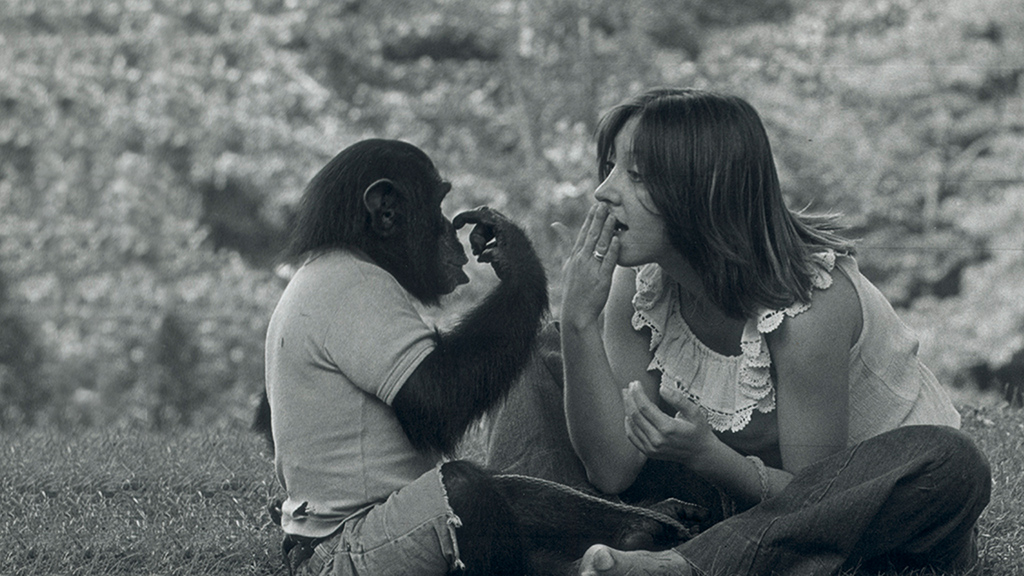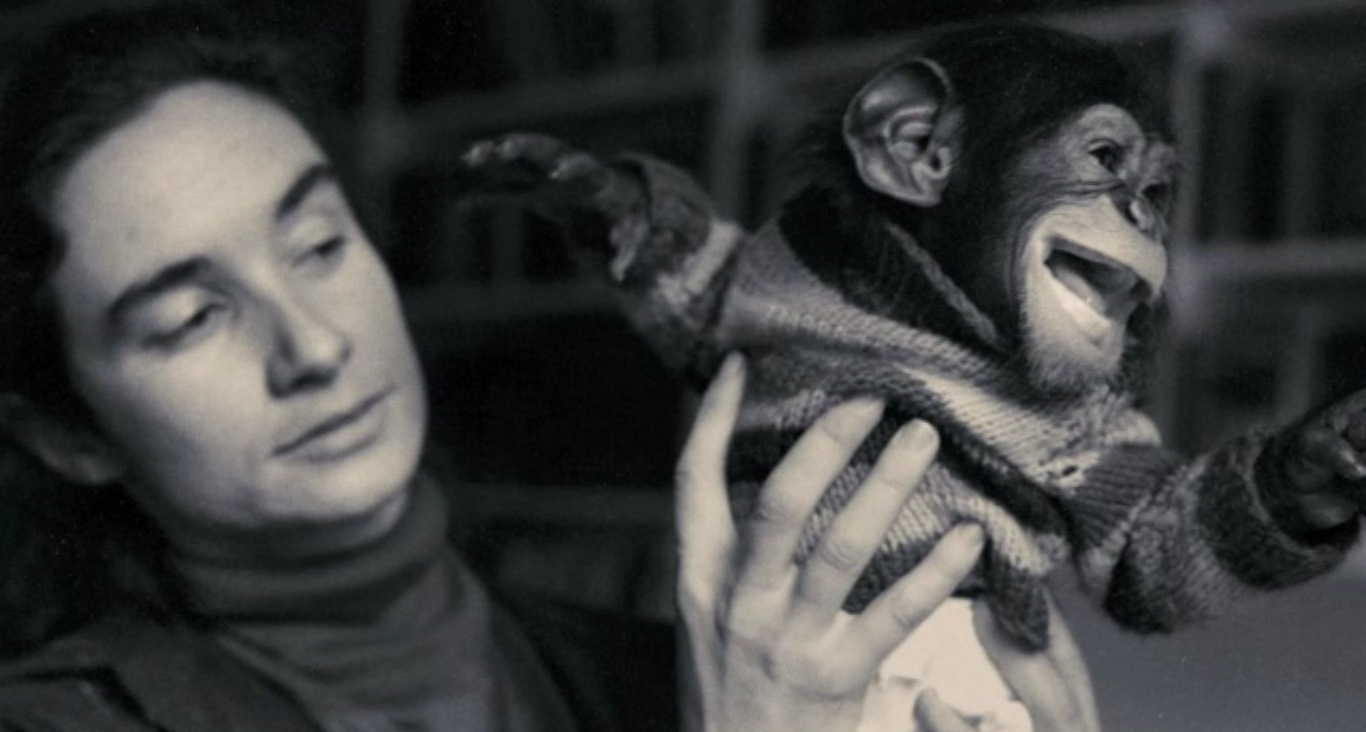James Marshís Project Nim (2011) is something of a fractured
biopic. It tells the story of Nim Chimpsky, a chimpanzee reared by
humans in order to investigate whether it could eventually communicate
by American Sign Language. The head of the project, Columbia Professor
Herbert S. Terrace, sought to refute Noam Chomskyís theory that language
is inherent only in humans.
Accordingly, he obtained a two-week old chimpanzee and placed it in the
custody of a hippie Manhattan family, mandating that it be raised like
an ordinary human child. Marshís documentary draws inspiration from
Elizabeth Hessí book, Nim Chimpsky: The Chimp Who Would Be Human
(2008), which argues against Terraceís project. In Project Nim,
however, Marsh takes a backseat, allowing the individuals principally
involved in Nimís life to reconstruct the story.

Nimís caretakers play a formative role in his education, however, what
is unexpected is Nimís role in shaping theirs. This powerful mutuality,
representing the central thrust of the documentary, is artfully captured
through a collage of home video
footage, candid interviews and dramatic reenactments.
Throughout the feature, Nimís
behaviour oscillates between an eerie human likeness and primal impulse,
thereby complicating his carersí feelings toward him. In one scene, for
example, he cradles a cat with utmost gentleness but in a later scene,
he is depicted dismantling the face of his language teacher.
However, Nimís worst crimes pale in comparison to the heartless manner
in which he is raised: as a mere experiment, to be discarded when no
longer required and abandoned to the whims of fate. With growing
uneasiness, the viewer observes Nimís tragic descent from celebrity
primate to LEMSIP test subject and finally, to an isolated misfit at
Black Beauty Ranch (a Texan ranch specialising in the care of formerly
abused equines). Ironically, by relating Nimís life as a failed test
subject, Marsh paints a dark and disturbing picture of human
limitations.
In the follow-up to his much-fancied Man on Wire (2008), Marsh
blends an intriguing ďnature versus nurtureĒ story with chic aesthetic
design, to a surprisingly woeful end-result. Decidedly, the filmís
downfall is its unforgivable lack of focus. Marsh manages to broach
several compelling issues but without examining any in sufficient
detail. As a result of this amorphousness, it is difficult for the
viewer to access the film on any meaningful level, whether intellectual
or emotional.

Illuminating this point are the filmís numerous interviews, which are
relied upon heavily to provide structure and emotional impact.
Chronologically sequenced to reflect the phases of Nimís life, they are
conducted with Dr. Terrace and his two research assistants (Stefanie
LaFarge and Laura-Ann Petitto), Nimís language teachers (Bill Tynan,
Carol Stewart, and Renee Falitz) and Bob Ingersoll, a deadhead
psychology graduate who befriends Nim, among others. As interviews go,
Project Nimís are passable. They are touching without waxing
maudlin and convey sincerity, without being soporific.
But in the end Marsh leaves behind too many loose threads. Trails of
beguiling stories are set down toyingly but are ultimately and
maddeningly, left untold. The dalliances between Dr. Terrace and his two
assistants, Nimís Oedipal Complex and the public apathy towards media
coverage of Nimís plight, for instance, are pushed to the periphery.
Marshís shelving of such potentially captivating topics seems careless.
The viewer is left frustrated and detached. It is this critical error,
as well as a panoramic scope, that renders any specific meaning, insight
or emotion hard to entertain, let alone engage with.